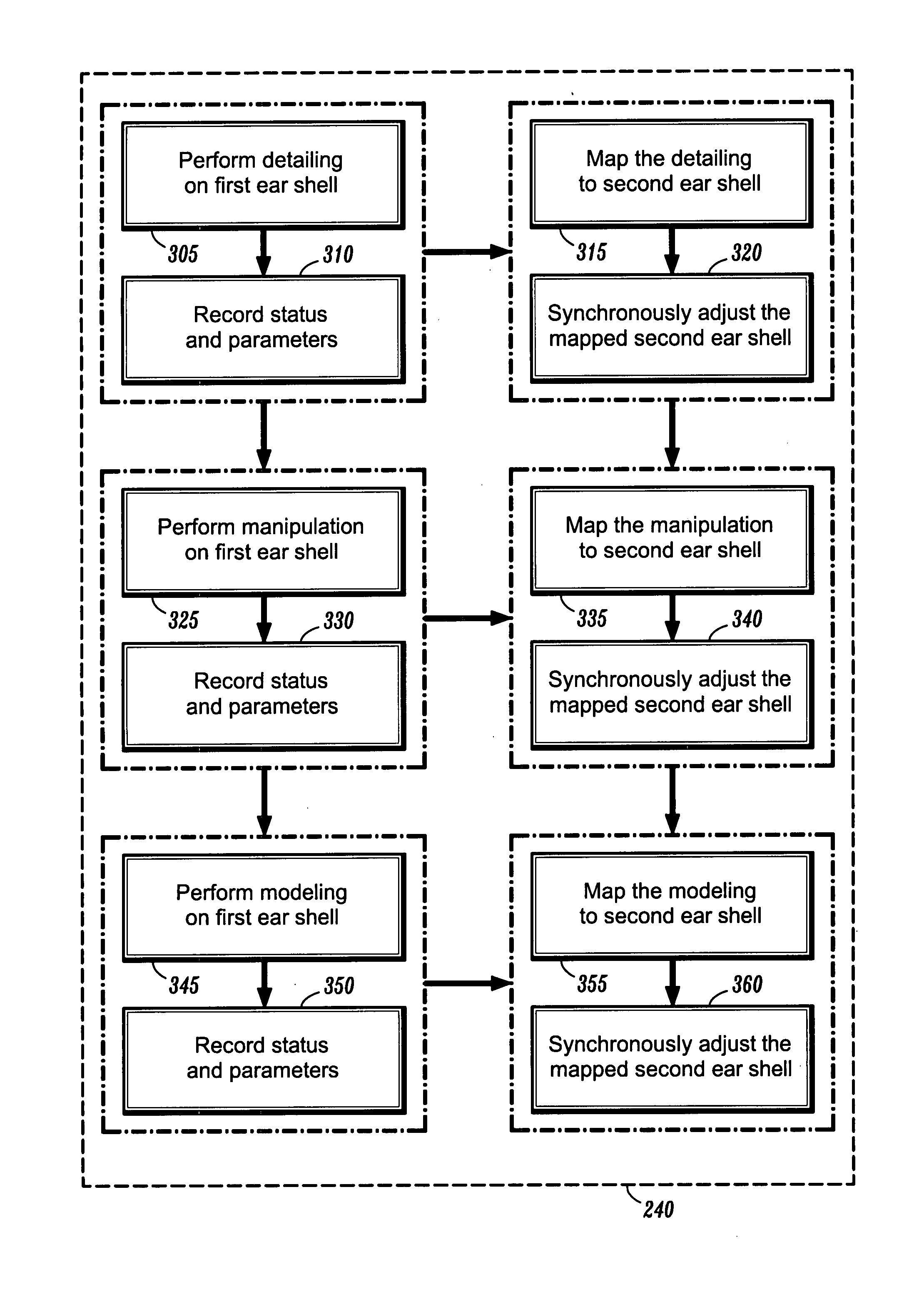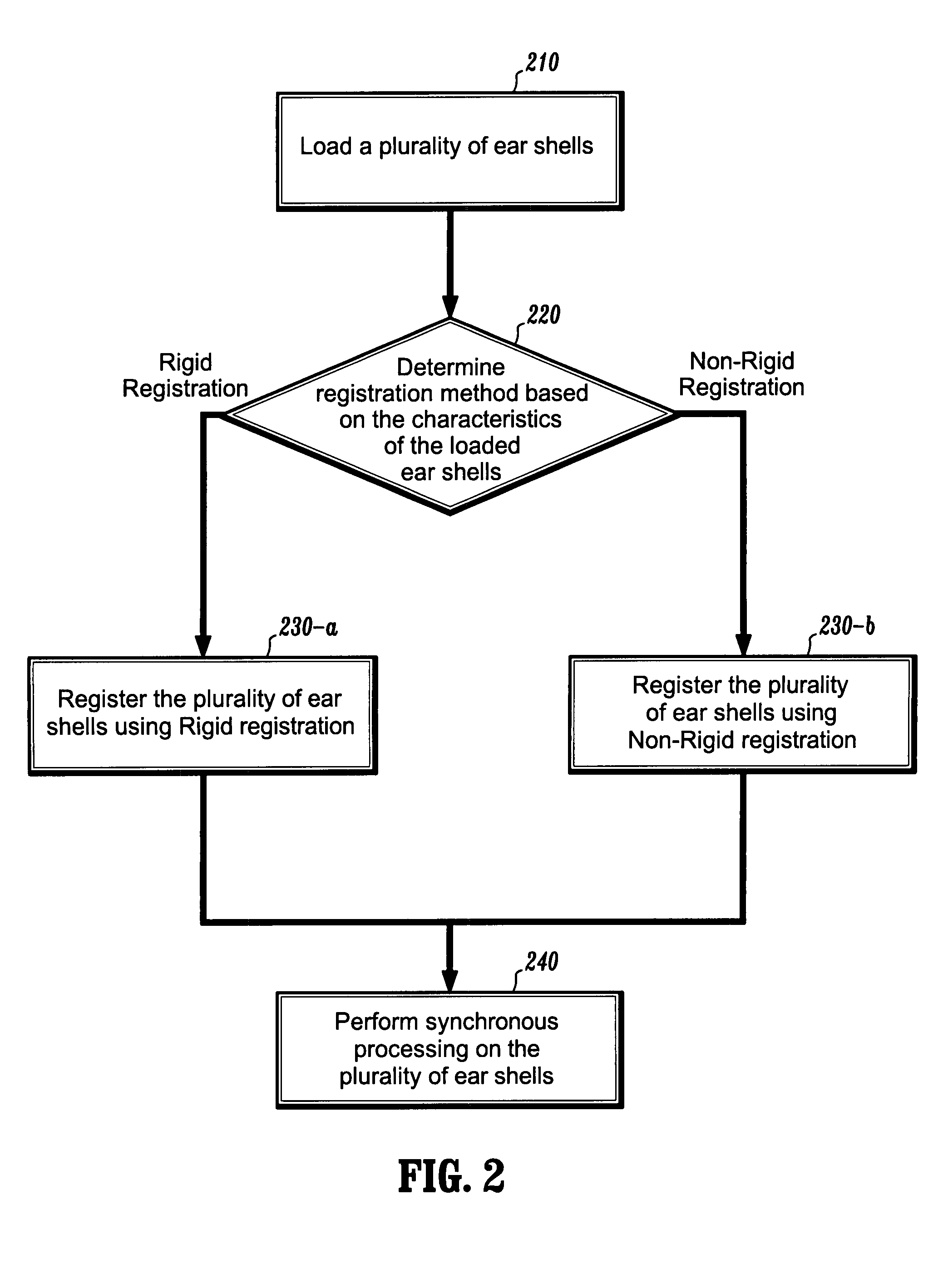Synchronized processing of ear shells for hearing aids
a technology of hearing aids and ear shells, applied in the field of hearing aids, can solve the problems of increasing the time and cost of hearing aid manufactur
- Summary
- Abstract
- Description
- Claims
- Application Information
AI Technical Summary
Benefits of technology
Problems solved by technology
Method used
Image
Examples
Embodiment Construction
[0028]FIG. 1 is a block diagram of a system for synchronously processing ear shells for hearing aids 100 according to an exemplary embodiment of the present invention. As shown in FIG. 1, the system 100 includes, inter alia, a three-dimensional (3D) scanner 105, a central processing unit (CPU) 110 and a prototyping machine (i.e., prototyper) 15. The CPU 110 includes a memory 120 and is operatively connected to an input 135 and an output 140.
[0029]The memory 120 includes a random access memory (RAM) 125 and a read only memory (ROM) 130. The memory 120 can also include a database, disk drive, tape drive, etc., or a combination thereof. The RAM 125 functions as a data memory that stores data used during the execution of the program in the CPU 110 and is used as a work area. The ROM 130 functions as a program memory for storing a program executed in the CPU 110. The input 135 is constituted by a keyboard, mouse, etc. and the output 140 is constituted by a liquid crystal display (LCD), c...
PUM
| Property | Measurement | Unit |
|---|---|---|
| shapes | aaaaa | aaaaa |
| threshold | aaaaa | aaaaa |
| size | aaaaa | aaaaa |
Abstract
Description
Claims
Application Information
 Login to View More
Login to View More - R&D
- Intellectual Property
- Life Sciences
- Materials
- Tech Scout
- Unparalleled Data Quality
- Higher Quality Content
- 60% Fewer Hallucinations
Browse by: Latest US Patents, China's latest patents, Technical Efficacy Thesaurus, Application Domain, Technology Topic, Popular Technical Reports.
© 2025 PatSnap. All rights reserved.Legal|Privacy policy|Modern Slavery Act Transparency Statement|Sitemap|About US| Contact US: help@patsnap.com



